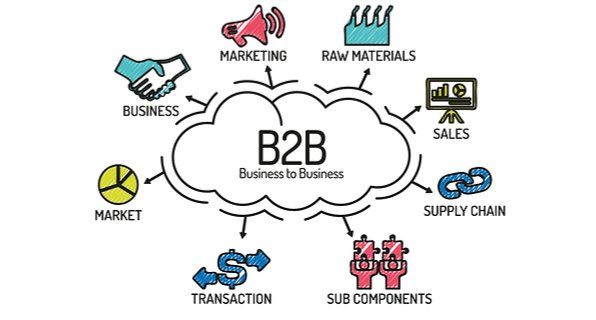B2B & B2C Ecommerce: Important Differences
8 Sept 2022, 2:59 am GMT+1
The economy is booming with ecommerce, both B2C and B2B? In fact, according to Forrester B2B ecommerce alone is expected to reach $1.2 trillion by 2021. To understand why this is happening and how to capitalize on the B2B ecommerce growth, we first need to define ecommerce.
What is ecommerce?
as any commercial transaction conducted online. This varies from small, everyday purchases like sneakers to larger purchases, like a whole home audio system. But ecommerce is more than just the sale of physical goods. It’s any commercial transaction that occurs over the internet. Other examples of ecommerce that you might not have thought of are crowdfunding, which helps a business with startup costs to bring a product to market. Subscriptions allow a consumer to receive your goods or service on an ongoing basis, which is another form of ecommerce. So, what’s the difference between B2C and B2B ecommerce? Here’s a look at the key differences.
B2B customers seek information
B2B ecommerce purchases are well thought out and strategic. There is no spontaneous purchasing and there are often multiple people involved in making the decision to
purchase a B2B product or service
. Purchases for B2B are focused on gathering facts to find the product or service that best enables their company to succeed, while also maintaining a budget. Because of this buying process, your website should focus less on design and more on ensuring that the right information is at the fingertips of your customers. That’s not to say design isn’t important, it’s just less important than information at the ready.
Prepare for group decision making
Committees are often responsible for purchasing decisions in B2B consumers. This means you need to be prepared to provide information for a variety of roles and interests within an organization. To do this effectively, you need to know what the classic committee or team looks like.

Negotiated price
If you’re experienced in B2C ecommerce, you know that the price one client pays is the same as another for the most part. However, be prepared to have much more flexibility when working with B2B customers. That’s because B2B customers often pay a
. It might be based on order volume or payment type. This means, you’ll need to be prepared to allow for various transaction totals in line with your clients’ contract. This means your ecommerce platform needs to seamlessly integrate with your accounting system or CRM to allow for such customization.
Different payment types
When conducting B2C ecommerce, the hardest question to answer as far as payment is which credit cards to accept. In B2B things are much more complex. Some businesses cannot make large credit card purchases. This means allowing for online orders where you invoice the client. In some industries, you should be prepared to allow for continuous orders that you invoice once per month. Think about office supplies. A company can’t always project the exact amount of office supplies needed each month. It’s more convenient for your customers to be able to order on demand when they need materials.
Alterations to your branding, messaging and marketing
Because the decision-making process is so different for B2B than it is for B2C, you’ll need to make some changes to how you market yourself. If your brand is more lighthearted with consumers, consider a more serious tone when marketing B2B. Remember that you might be reaching executives or higher-level management who are looking for professional partners. As you evaluate where to put your time and efforts, remember that content marketing is king in B2B marketing. You can get away with much longer content in B2B, such as whitepapers, because businesses need to prove their worth of their purchases. In fact, the more content you can produce in varying lengths that fit in with your buying journey, the better. So, as you look to define ecommerce at your company, take a good look at your consumer. Create strong buyer personas for each type of customer you interact with on your journey to more insightful B2B marketing.
This is an article provided by our partners network. It might not necessarily reflect the views or opinions of our editorial team and management.
Contributed content
Share this
previous
Reinventing the Product: A Practical Road Map For The 75% Of Industries Facing Disruption
next
5 Tips For Managing Rapid Business Growth